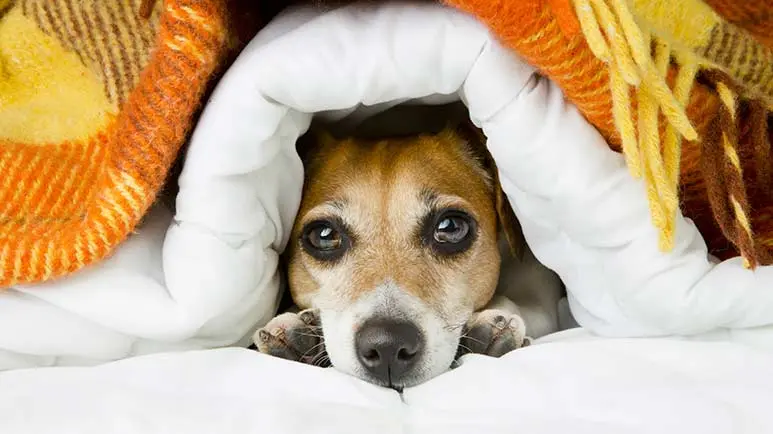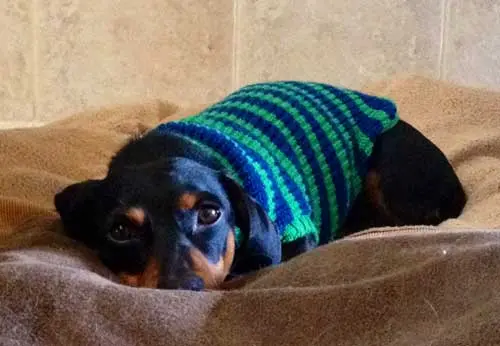3 Telltale Signs That Your Dog Is Cold
Many owners brush off dog sweaters and coats as unnecessary, but there are situations when they provide much-needed, welcomed comfort for your dog. Know when to suit up (and when not to) and the signs that may mean your dog is quite cold.

STORY AT-A-GLANCE
- Despite their fur coats, some dogs need extra help staying warm during the colder months of the year
- Your canine companion may benefit from a sweater or jacket if he’s a toy breed, has a short or thin coat, or is hesitant to relieve himself outside when it’s cold
- Your dog’s sweater should be snug but not tight, and easy to put on and remove. It’s important not to leave the sweater on for long periods to prevent overheating and skin rash
- While sweaters or jackets make sense for some dogs, pants, raincoats, and boots probably do not
Editor's Note: This article is a reprint. It was originally published January 23, 2015.
Many dogs, just like people, feel cold when winter weather arrives. But many dog guardians are confused about whether putting a sweater or coat on their pet makes sense, because after all — the animal is covered in fur!
But not every dog has a long or dense coat, or a double coat. Short-haired dogs are often vulnerable to cold temperatures, as are very small dogs, light-bodied breeds, seniors, and pets with health conditions. So it's certainly possible that your canine companion may be uncomfortable in cold weather.
How to Know if Your Dog Is Cold
One sign that your dog is feeling chilly is a hesitance to go outside to potty. And if she insists on lying on you or in contact with you at bedtime, it's another sign she's looking for warmth. And of course shivering is always a red flag.
If your dog is sending "I'm cold" signals, is a small or toy breed, has a short or thin coat, is older and perhaps doesn't get around well, or has a chronic health condition, a sweater or jacket may the best thing for her.
Dogs that aren't likely to need outerwear are large breeds with dense coats — breeds like the Saint Bernard, Malamute, and Siberian Husky. These breeds and most dogs bred for cold climates can actually overheat in a sweater or jacket. Overweight dogs often don't need extra insulation, either.
But breeds like the Chihuahua, many of the terrier and pinscher breeds, and the Greyhound, are examples of dogs that often need a little help staying warm.
Choosing the Best Sweater
When picking a sweater for your dog, I recommend a fabric that can be easily washed and dried, and one that won't itch or irritate your pet's skin.
You'll want to measure the circumference of your dog's neck and chest, and the length of his body from neck to waist, plus take his weight, so that you can select clothing that fits. A dog sweater should be snug, but not tight. The length should end at about the waist, leaving the dog's back end free. The neck and leg holes should be big enough that your dog can move freely, but not so big that he can pull his head or a leg out.
I recommend plain sweaters without zippers, hooks, buttons or other adornments that can be both annoying to your dog and a choking hazard. The sweater should be easy to put on and take off without a struggle. I also look for sweaters made of natural material, like this organic, recycled 100% cotton sweater I just found for Lenny.

You may have a few misses before you hit on the right size and fit, so either take your dog with you so you can try things on him, or shop at retailers with liberal return policies.
Additional Tips
If you put a sweater on your dog, especially indoors, make sure to check regularly to insure she's comfortable. I recommend taking sweaters on and off every few hours to prevent overheating or an itchy rash.
And keep in mind that not every dog who needs a coat will wear one — it's just too unnatural for some. So don't force your dog to wear any item of clothing if it means she can't act or move naturally.
And one more thing … dogs rarely, if ever, need pants. And raincoats are unnecessary, as are boots, in most instances. Dogs feel the ground with their paws, and anything that interferes with their ability to perceive their environment isn't a great idea for most dogs.











